Building Our House V
We can't believe it's already the month of May. We stopped construction on our house in early November of last year to find a new architect, but instead we found two, a married couple, whose names are Mercedes and Alvaro. Since mid-December, we've been working with them to create a new design, produce a detailed presupuesto, acquire all city and INAH permits and restart construction.
We signed a contract with our architects, using the general wording of a contract provided by our lawyer, putting in a few of our own requirements. In particular, we agreed that we would be the patron of record for the workers' Social Security, avoiding double taxation, but the architects would administer the program. We have since signed MANY government documents indicating that they are in fact making the payments. We also built into the contract an incentive for the architects to finish the work on time, with a small incentive if they bring the project in before schedule, and an equally small multa (fine) if they don't. The amount isn't enough to cause anyone serious pain, just enough to coax things along.
Construction began again near the end of February. So far everything has been moving like clockwork... and the clock is even running a little fast. We've had a couple of bad surprises, like when one of the few existing walls fell down as they were chipping away at the old plaster, which meant the wall had to be rebuilt. There were also the calculations revealing that the fosa septica had to be dug 80 cm deeper in order to accommodate the slope of the pipes coming from the various bathrooms. But these extra expenses have been balanced out by other tasks that have taken less effort than expected. The best news is that as of our last expense report, we seem to have accomplished more than planned with less money, a welcome trend.
Almost every morning, before 8 AM, we drive by and walk around the construction site to see what has been accomplished the day before. The crew arrives about the same time (and often earlier) from a town outside Merida, called Seye. First they change into their construction clothes, which many of them leave at the job site overnight. Then they eat a hasty breakfast, often gathering around a makeshift table to share Yucatecan fast food, like panuchos, washed down by cold Coca Cola of course. Then they go to work. There are actually three foremen on the job every day, supervising three crews, for a total of about 25 workers. We have discovered them still working at the site as late as 6 or 7 PM when we can't resist another drop-by to see the day's progress.
Most of the work at this point is done with cinder block and concrete. Foundations are poured over steel mesh woven from rebar. A thick, black, rubbery substance is painted over any part of the foundation that contacts the walls, to prevent leaching and subsequent moisture damage. In some cases, the walls are made of two rows of cinder block. Our thick walls are an aesthetic choice more than a requirement for holding up a second story. The mamposteria walls of the old colonial buildings in Yucatan are often more than a foot thick and there are places in our house where we want the same appearance. However, most of the structural strength is provided by strategically-placed beams of concrete and steel built inside the walls.
Our house design calls for about a dozen columns and arches, which are also a typical feature of Yucatan colonial homes. The columns we chose are pre-fabricated concrete and arrive in sections. Since they are load-bearing, the centers of each column are fitted with steel trusses and filled with concrete. Stone columns are available here too, but we went with concrete that looks like stone because they cost less.
The arches are formed on top of the columns, a process that seems more like sculpting than construction. The negative space below the arch is roughed out using a checkerboard pattern of cinder blocks. This is covered with mortar to form the line of the arch. The workers need nothing more than a piece of string to keep the angle true. A layer of brown paper is smoothed over the mortar and everything is allowed to dry. Then wood planks are nailed to each side of the form to create a mold above it and the concrete is poured inside. After a few days, the cinder blocks and wooden planks are knocked away to reveal the arch.
Plaster is applied to the cinder block walls by hand in three coats, using a process we have only seen in Yucatan. The first coat is called rich (pronounced "reech"). A thin soupy mixture of Portland cement and sand is literally slapped against the wall with a trowel. This seals the cinder block and sets up a very rough surface for the next layer, called the reboco (ray-BO-ko), or emparche (em-PAR-chay) by some. This is the so-called "rough coat", which is a much thicker layer that smooths out any imperfections between adjacent blocks to produce a level surface. The reboco is allowed to dry and crack for several days before receiving the final or fina coat, called estucco (ess-TOO-ko). If you want a textured stucco finish, then ask for huleado (oo-lay-AH-do), but if you prefer the almost polished look of hand-troweled plaster typical of colonial architecture, ask for bruñido (broo-NEE-do).
Stage One of construction has been to build the basic structure of the first story, naturally. And much to our delight, the first story is now being covered with a roof, which might be completed by the end of this week. All the downstairs walls are completed and being plastered as we write.
What's more, the plumbing and electrical is already being installed in the downstairs rooms. This is unusual in our experience here. In most renovations and even in many new constructions, the walls and floors are finished before the plumber is called in. This means a chisel and hammer are applied to the finished surfaces to cut out channels in the concrete where the pipes and conduits are installed, after which repairs are performed to hide the work. This tradition comes from a time when the colonial homes had been built long before the advent of plumbing or electricity. Our architects are not observing this tradition, however, and being ever cost-conscious, plan to install at least one functioning toilet right away so we can eliminate the expense of the sanitario portátil, or what we call a "honey hut" back in California.
Last week, we decided that it was time to start thinking about ordering the mosaicos (tiles) for the floors, as custom tiles can take up to three months to deliver. We have been looking for some used mosaicos as well, but so far haven't found any with designs we like. There are so many patterns and color schemes to choose from!
We also intend to use mostly reclaimed wood in the house. This mostly applies to doors, so we have been shopping at the local antique dealers and other locations to find classic hardwood doors removed from abandoned colonial houses. There are still many to choose from, and the cost of refinishing them is less than the cost of making new ones.
Another important element of Yucatan colonial architecture is stone. We plan to pave our inner courtyard with rough-hewn stone and install other carved stone details around the house. There are several types of limestone quarried in Yucatan, but most of the preparation and carving is done in a small village north of Merida, called Dzitya. We recently visited there with our architects and their children. You can read about it here.
Today is May 3rd, and as everyone around here but us seemed to know, it's the feast day of Santa Cruz, or the Holy Cross. Santa Cruz is the patron saint of all albañiles (masons) and builders. On this day, the workers will set up an altar on the job site. At noon, all work will stop. They will then be treated to a lunch of cochinita pibil and ice-cold Coca Cola by our architects and ourselves to honor them on their day. We don't doubt that some voladores (rockets) will be set off during the events. And since the afternoons here are starting to live up to Yucatan's reputation as a hot house, we plan to hire a paleta cart so everybody can enjoy cooling off with their favorite ice cream.
To all those who toil under the hot sun to build and renovate and repair our homes, muchissimas gracias!
***
If you'd like to read previous articles about building our house in Yucatan:




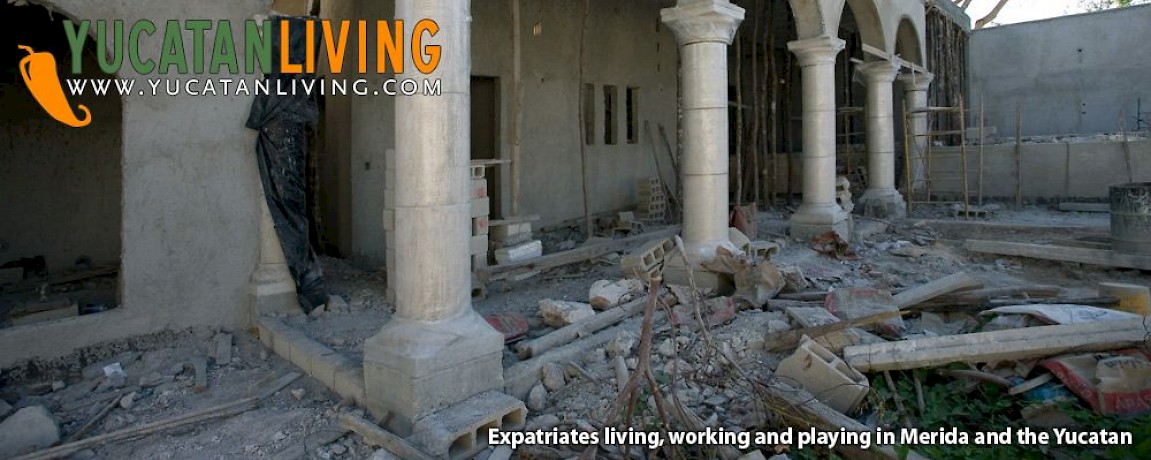


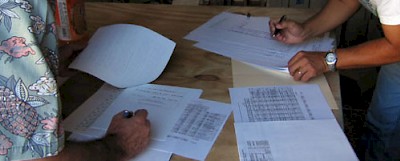
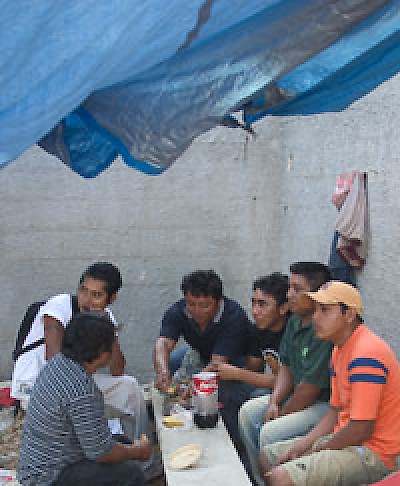
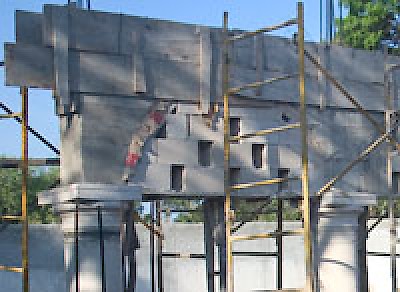
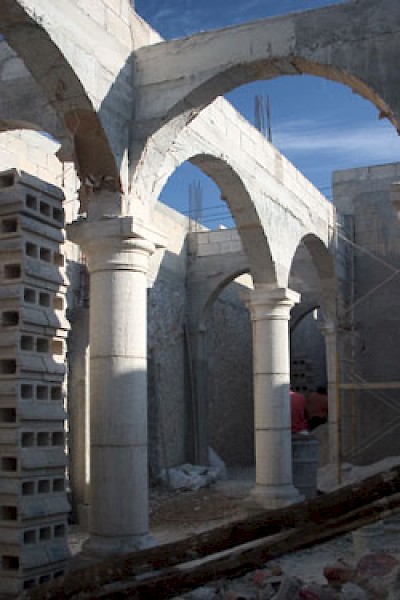
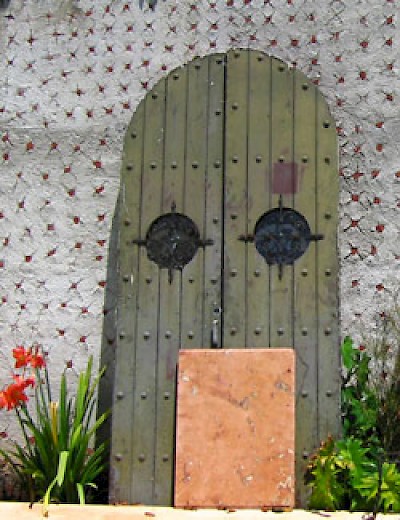

Comments
Lorraine 18 years ago
Thank you WG's for all this information and this site. I am planning to move to Merida next year and am going to buy a little house there in the summer (that doesn't quite mean the same thing there as it does here in Vancouver!) I am much more informed because of your site. Thanks and hope to meet you one day!
Lorraine
Reply
Working Gringos 18 years ago
This is the website for Sergio and Claudette Terrazas. They also own Casa Esperanza B&B.
Reply
Deb 18 years ago
Has anyone heard of this company? www.colonialyucatan.com
Thank you.
Reply
The Stones of Dzitya 18 years ago
[...] Our most recent article about Building Our House in Merida All about mosaico tiles also made in Merida [...]
Reply
Deb 18 years ago
Thank you for your fast reply regarding my other question.
We just bought a home in Merida and will be there this summer when the construction/renovations will be started. I have read a lot from your experiences and want to know if I am forgetting anything. Here's what I know so far from your articles:
*Ask for a design estimate from more than company and obtain a design and presupuesto before the work starts.
*Obtain a standard construction contract from your Mexican architect or lawyer. It should limit your liability for
budget overruns and may include incentives for completing the project to
a schedule. The contract should also stipulate that all workers be paid
Social Security by the contractor (not you). The contract must be
signed by all parties and notarized to be enforceable.
*Always obtain all required permits before beginning work.
If there's anything you can think of that I forgot, please let me know. I am sure I will learn along the way, but I'd like to try to have things running as smoothly as possible. I am now thinking that it may take two months to complete all the paperwork and we may not be able to get any actual construction started this summer when we are there.
Also, can you recommend anyone to watch our house (check in once a week) when we are back in the U.S.?
Thank you very much for reading.
Reply
Matthew 18 years ago
Thanks for the links and the info!
Reply
Working Gringos 18 years ago
Dear Matthew,
We're not qualified to answer either of your questions, partly because we're not really joiners of any particular group, even the ex-pat community. We guess you could say we're lurkers, too.
We can make two basic observations, however:
Several of our ex-pat friends are gay and we're aware that there is a sizable gay ex-pat community in Merida. We have participated in events for two local organizations, Brazos Abiertos and Buenas Intenciones, where you can learn more.
We are also aware that nearly every religious organization, order, sect, cult and concept is represented in Merida, from Liberation Theology to Yoga, from Mormons to Buddhists (and we were told this was a Catholic country!). But we don't think there is any one congregation where ex-pats, uh... congregate.
Reply
Working Gringos 18 years ago
Hola Peregrina,
We wish the inauguracion was soon, but our architects tell us the house won't be ready to move into until next February. But when it's ready, we will post our final report as an invitation (ojala!), and you are definitely invited!
Reply
Matthew 18 years ago
Hello WGs!
I've been a lurker for some time; thank you for sharing so much of your experience, both blessing and trial.
I have two questions for you:
1. What's the LGBT scene and situation like in the Yucatan in general, and Merida in particular? What would you tell a friend who was lesbian or gay and considering moving to Merida?
2. What's the expat faith community like? Specifically, are there established churches that significant numbers of expats attend? I ask as a minister in training (UCC!) who is considering moving south of the border.
Thanks!
Reply
YucaGringo 18 years ago
It sounds like things are "coming together". Thank you for taking time to document your experiences. Your website and articles are great. It makes my day to receive a notification of a new post. I am a big fan, to say the least. Keep up the good work!
Reply
Genny M/La Peregrina 18 years ago
Congratulations are in order and soon the "Inauguracion" (openhouse) for you working Gs, It sounds like a beautiful big house, I like to meet your Architects because I will be building in a near future, in the mean time a have a house in Chelem/Peregrina, to anyone who would like to rent it any time of the year, please email me, it is very confortable. Way to go guys...! remember to invite us we will bring the tamales..
Reply
« Back (20 to 31 comments)Next »